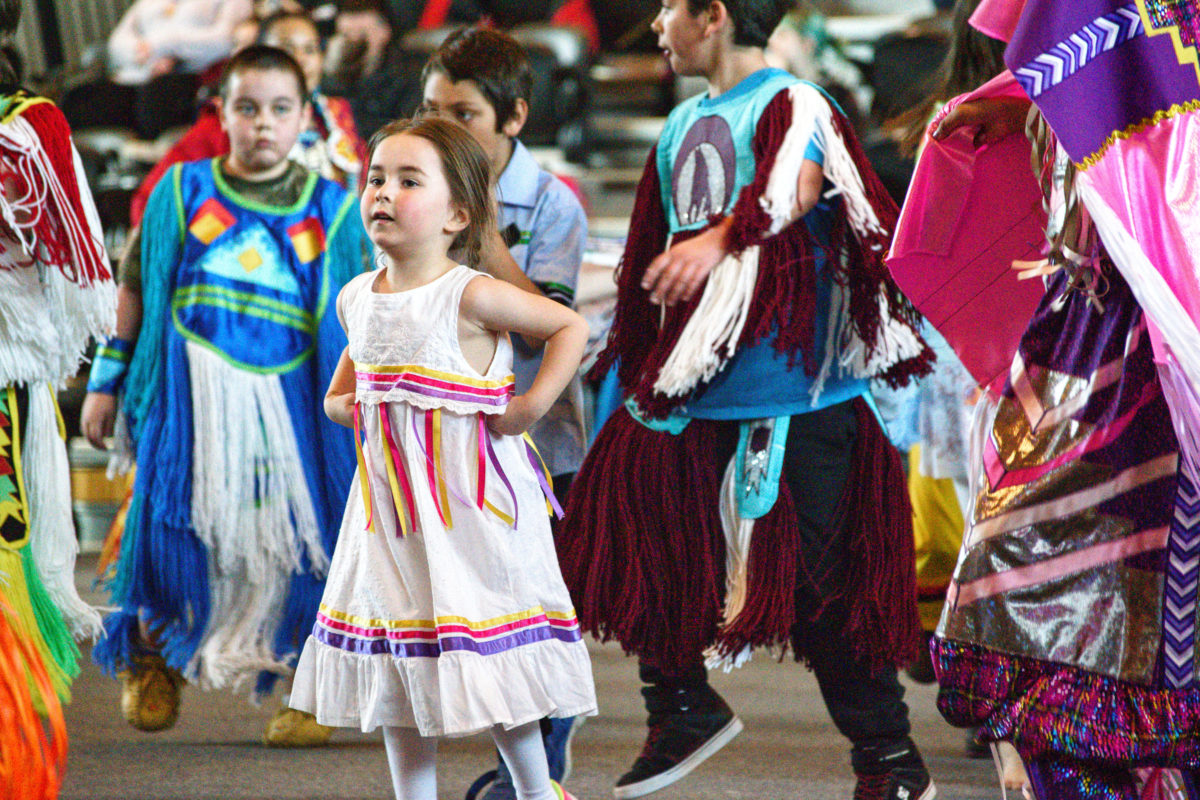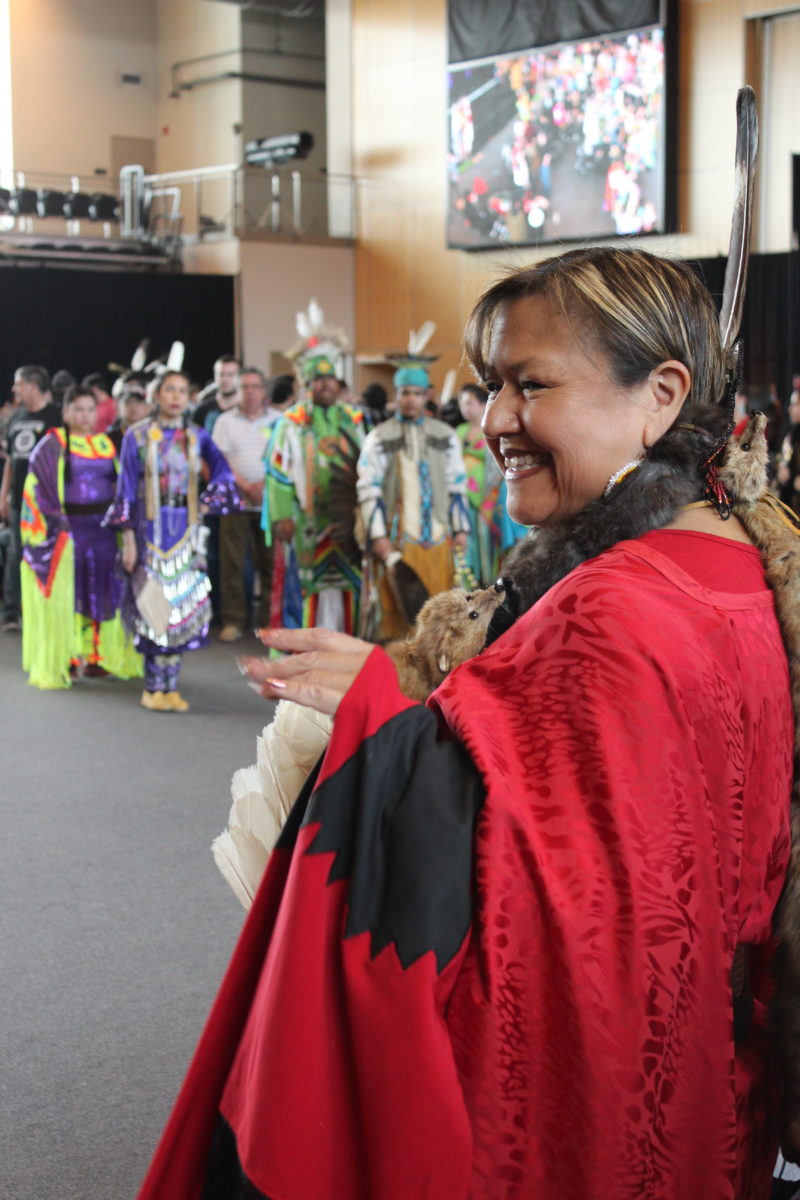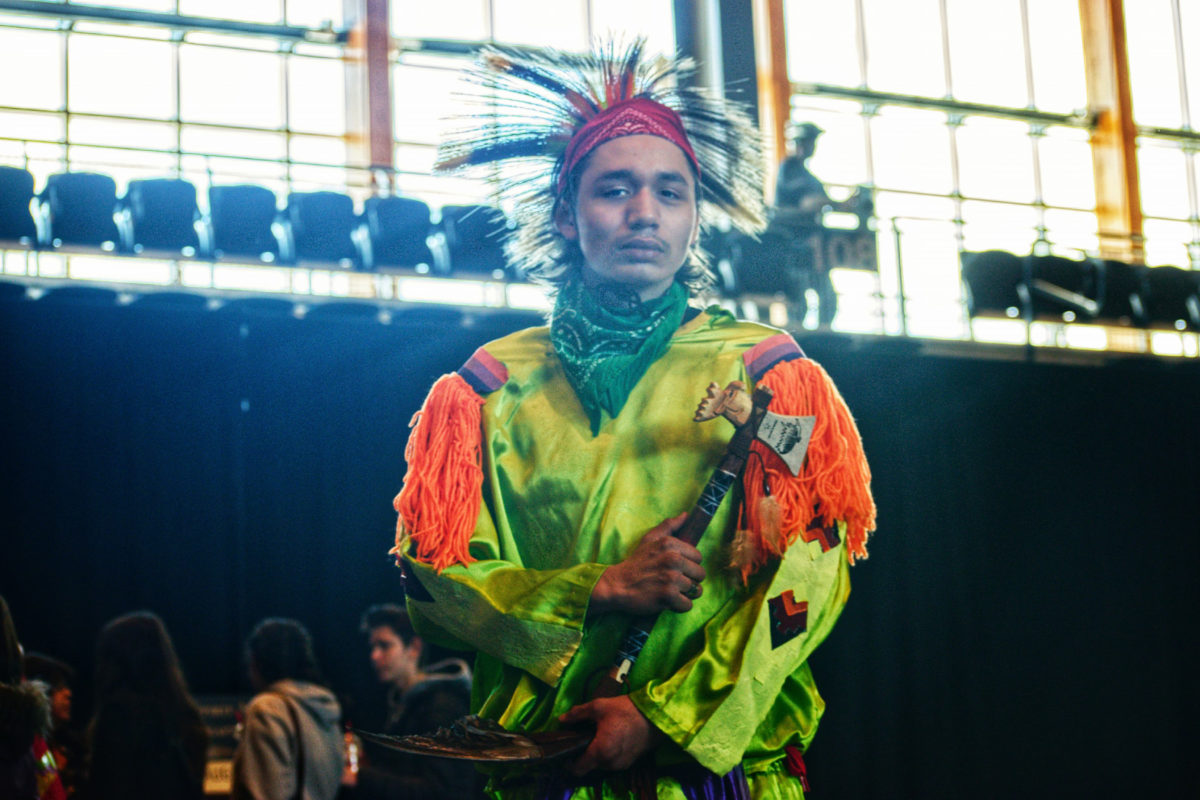The steady beat of the drum drew people through the doors of the Mi’kmaq Wolastoqey Centre’s fourth annual powwow on April 5. But it was the unity and culture that encouraged members of Indigenous communities from across the province to attend.
Victor Levi travelled from Elsipogtog First Nation with his wife, daughter and son to participate in the University of New Brunswick powwow for the third time. All four were dressed in regalia, prepared to dance in the Richard J. Currie Center’s performance hall.
Levi helped his two-and-a-half-year-old son Bradley put on clothing made of porcupine, deer hair and woven yarn, as he discussed the event.
“For us it’s like one great big family, we all pretty much know everyone,” he said. “We try to encourage not discourage. We try to bring back our heritage.”
Levi said powwows are about keeping culture alive for the next generation. He started carrying Bradley into dance circles as a newborn. His son’s first powwow experience was at UNB.
Tessy Taylor of Esgenoôpetitj has danced in the powwow all four years. She has seen an increase in interest from the community as the event has grown and developed.
Taylor said the powwow is about sharing and teaching Indigenous culture and helps dispel false negative stereotypes around native peoples.

“Our culture is very important. It’s who we are, it’s our identity,” she said. “Our different dances are our identity.”
Many participants described the powwow as a unifying event. School children from the greater Fredericton area were bussed in to attend.
A sense of connection was present in the theme of All My Relations: Unity in Diversity. Flags from all the communities involved were presented together, side-by-side at the beginning of the powwow.
The opening ceremonies included everyone and the Grand Entry involved a group of Indigenous and non-Indigenous leaders.
Bronson Acquin-Mandisodza and Amanda Reid led the procession as lead dancers, a distinction considered to be a great honour.
Fredericton South MLA David Coon was one of several local officials to attend the powwow. He said in an interview before the opening ceremonies the event helps create cross-cultural understanding with the broader community.
“It helps reflect the pride of Indigenous people in where they are today and where they’re headed,” Coon said.
Warriors of all colours
Following the Grand Entry, Miigam’agan, St. Thomas University’s elder-in-residence, delivered the opening prayer before speaking to the crowd in English. She said the event focuses on the transition to spring while acknowledging traditional language, land and history.
“We have an opportunity today to celebrate and thank our creator, to come through the winter months and be here in springtime to celebrate the new life,” Miigam’agan said.

Wolastoq Grand Chief Ron Tremblay spoke of the importance of young people standing up against injustices to Mother Earth’s lakes, rivers, streams, oceans and air.
He described the young people dancing at the powwow as knowledgeable and wise warriors.
“I want to thank these young warriors of all colours. Look at their beauty,” Tremblay said.
UNB president Eddy Campbell said this is a time for the university to respond to the Commission on Truth and Reconciliation Commission’s calls to action. He said plans are in place for the creation of an Indigenous advisory council.
“We want every Indigenous person who comes our way to feel that we honour and celebrate their culture, and so they will feel at home when they study with us,” Campbell said. “There’s an awful lot of work to be done, on an awful lot of different fronts, but I know we have the energy and commitment to get it done and respond to the calls to action.”
New Brunswick’s lieutenant-governor Jocelyne Roy-Vienneau told the crowd the event is about celebrating differences and thousands of years of culture. She said New Brunswick may be small, but has tremendous diversity to benefit from.
“This is about sharing and teaching non-natives like me and others,” Roy-Vienneau said. “This is about embracing our past and paying tribute to our ancestors.”
Six drumming circles alternated performances throughout the day as master of ceremonies Nipahtuwet Naka Wespahtuwet Possesom transitioned performers between various dances and several rounds of competition for prizes.
Vendors inside and outside the performance hall sold handmade clothing, crafts and beaded jewelry.
Keeping the culture alive
Outside the performance hall, Amethyst Murphy took a break from dancing to chat with friends. The 20-year-old from Eel Ground First Nation, located on the Miramichi River, attends 10 to 15 powwows a year and has been involved since she was young.

Her mother, Genny Murphy, said they attend every powwow they possibly can.
“Amethyst started dancing as soon as she could walk – she’s been dancing every year for 20 years,” she said.
The younger of the two Murphys said it’s important to her to practice her culture and speak her language, something powwows encourage and welcome.
“Twenty plus years ago, we weren’t allowed to have [powwows]. They were against the law, so every opportunity to dance in regalia and have a powwow, I take it.”

